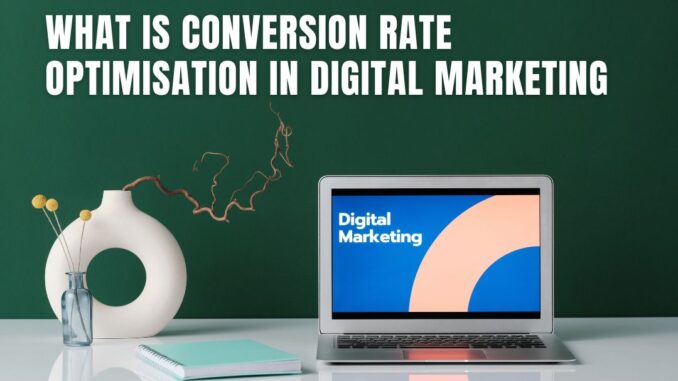
Conversion rate optimisation or CRO is a process that helps you increase the number of customers your digital marketing campaigns convert, without increasing your digital marketing budget.
What is Conversion Rate Optimisation?
You might have heard terms like SEO, PPC and Social Media Marketing. CRO is a subset of each of these marketing methods. It’s an umbrella term for all the different ways you can improve your website to make it more effective at converting visitors into customers.
Why is Conversion Rate Optimisation Important?
How to set up a Conversion Rate Optimisation Program
To set up a Conversion Rate Optimisation Program, you need to define the problem before starting on a solution. Before we begin, let’s take a step back and look at what Conversion Rate Optimisation is. It’s the process of improving your website in order to increase sales, leads and customer satisfaction.
A CRO program consists of a series of steps that are used over time to improve conversion rates (the percentage of visitors who complete an action). There are many different types of online marketing tactics that can be used for CRO e.g., content marketing, paid advertising or email marketing campaigns – but we recommend focusing on just one type of strategy at first so as not to dilute your resources too much!
Conversion Rate Optimisation Strategies
Conversion Rate Optimisation (CRO) is the process of testing and improving a website’s design, content and functionality to increase sales, leads or sign-ups. It is one of the most important aspects of digital marketing. The goal of conversion rate optimisation is to increase revenue by having more visitors complete a specific action on your site, such as making an online purchase or filling out a contact form.
There are many strategies you can use for conversion rate optimisation: A/B Testing, Multivariate Testing and Split Testing are three common approaches that marketers use to increase conversion rates on their websites. These tests compare different variables. For example, comparing two different web pages with different layouts or colours can help determine what elements work best with customers during their visit time at your site..
CRO can help increase the number of customers your digital marketing campaigns convert, without increasing your digital marketing budget
CRO can help increase the number of customers your digital marketing campaigns convert, without increasing your digital marketing budget. This means that you will be able to increase ROI by converting more of the traffic coming to your website and thus generating more revenue. CRO also helps businesses increase customer satisfaction and loyalty, which leads to a higher number of repeat customers and brand awareness.
CRO: Regularly Asked Questions
If you’re considering investing in CRO, this article should help you to get a better understanding of what it is and how it can benefit your business.
CRO is the process of improving your website so that users are more likely to take action on it. This could mean signing up for an email newsletter or purchasing a product – whatever action is most valuable to your business. This can be done through various methods, such as A/B testing different versions of landing pages, adding CTAs (call-to-actions) and ensuring the site design doesn’t cause any friction with the user journey.
How can I implement CRO in my business?
The best way to implement CRO into your digital marketing strategy would be through an agency who specialises in both digital marketing as well as CRO services – these agencies will know exactly where they need to focus their efforts when making changes to increase conversions
What does conversions mean in digital marketing?
When you’re talking about conversions, you’re talking about one of the most basic metrics. A conversion is a desired action taken by a user after visiting your website. The most common conversions are sales, newsletter signups, downloads and even social media likes or shares.
Conversion rate is the percentage of users who take that desired action after they visit your site. If you have 100 visitors and 5 convert into leads or sales then your conversion rate would be 5%.
Is conversion rate optimisation part of SEO?
While it might seem like a bit of a stretch to consider conversion rate optimisation (CRO) a part of search engine optimisation (SEO), there are some major factors that tie them together. The two practices both focus on how to design websites, content and landing pages in order to attract the right users who will convert into leads or sales. Both other rely on keyword research and analysis as well as internal linking strategy in order to achieve this goal. While there is no exact science here, if you want more traffic from Google then it would be worth considering CRO services as part of your overall SEO plan.
Benefits Of Conversion Rate Optimisation
Conversion rate optimisation is the process of continuously improving your website’s conversion rates by making improvements to its usability, design and copy. The goal of CRO is to increase the number of visitors that turn into leads, customers or donors (depending on your objective) and ultimately increase revenue.
Does Conversion Rate Optimisation Really Work?
Conversion rate optimisation is a long-term strategy. It’s not a quick fix, but it will help you to increase your sales, ROI and customer lifetime value.
It takes time for changes to take effect, so don’t expect to see results overnight.
Conversion rate optimisation can be used by any business – whether you’re selling physical products or digital goods.
Examples Of Conversion Rate Optimisation
Conclusion
Conversion Rate Optimisation is a process that can be used to improve your digital marketing campaign’s conversion rate. By increasing the number of conversions from each visitor, you will see an increase in revenue over time!

Leave a Reply